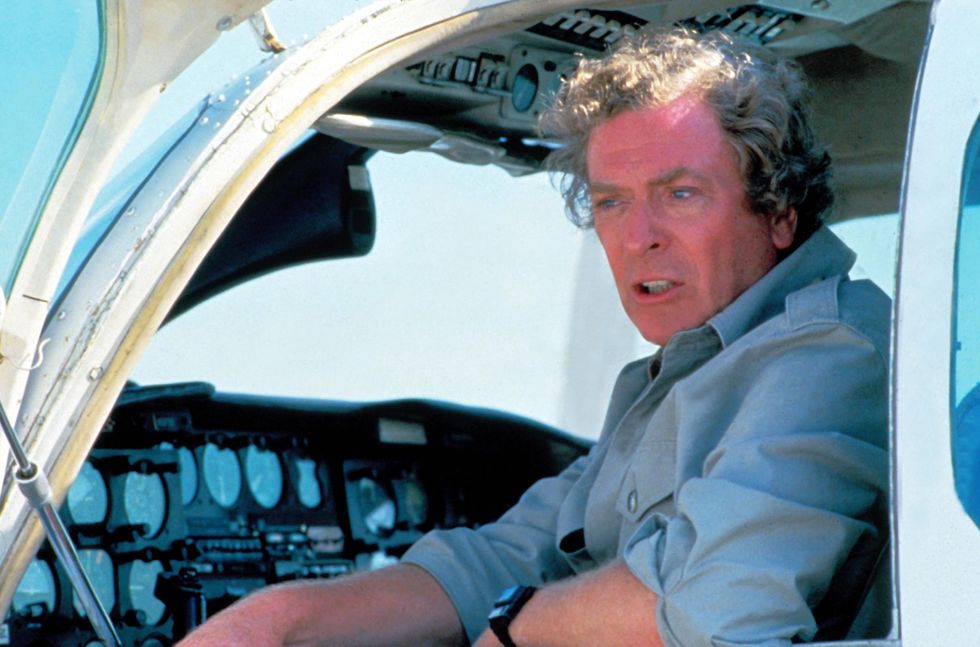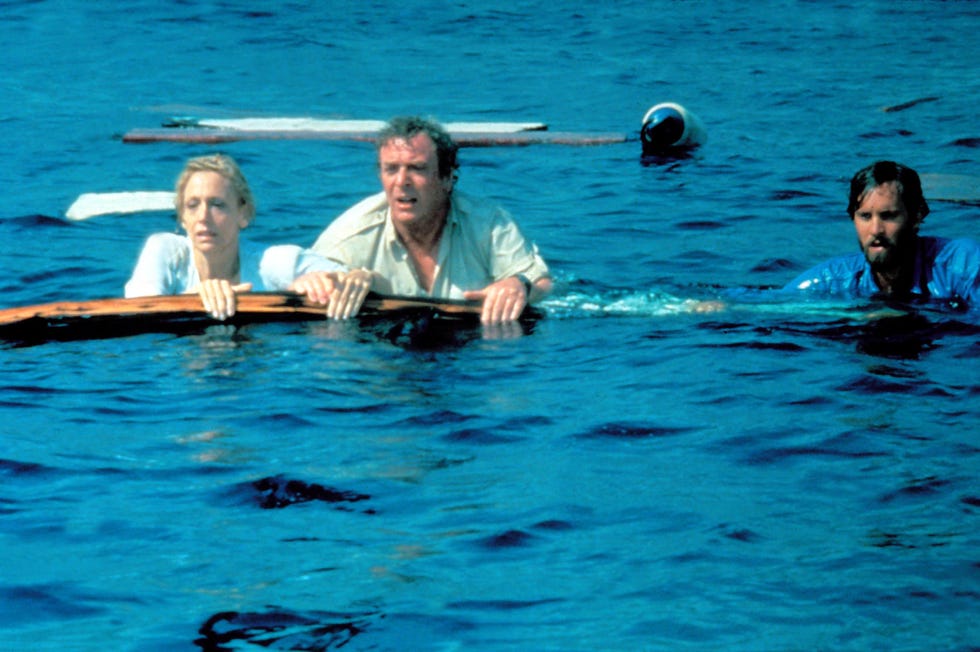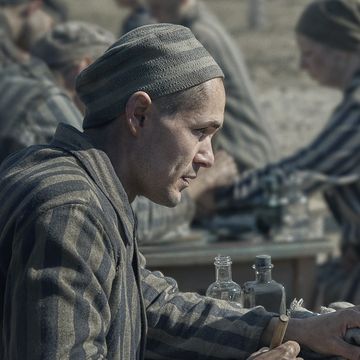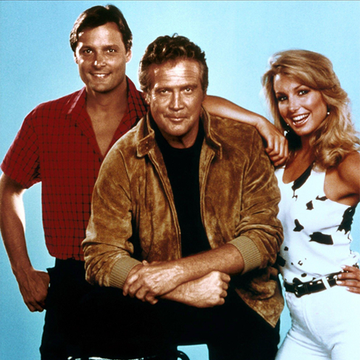Earlier this summer—on June 20, to be exact—movie lovers around the world celebrated the 45th anniversary of Jaws. And why not? Four-and-a-half decades after its initial release, Steven Spielberg’s Great White classic remains the quintessential summer blockbuster. For better and worse, it also marked the birth of the bigger-is-better modern Hollywood tentpole movie. Two years before George Lucas took us to a galaxy far, far away with Star Wars, Jaws was one of those rare movies that you simply had to see if you wanted to be part of the pop-culture conversation. It was perfectly cast and acted, structured as exquisitely as a Swiss timepiece, and remains as powerful today as it was when it first hit theaters. After all, Jaws was also more than just movie about a giant man-eating shark.
Even after 45 years, Spielberg’s film is so thematically rich that it still manages to speak loudly and clearly to our current moment. With a denialist president in the Oval Office routinely downplaying the dangers of COVID-19, instructing people to foolishly go back to their unmasked, pre-virus lives (back in the water, as it were), Donald Trump is little more than a contemporary incarnation of Amity’s craven, pro-business mayor, turning a blind eye to a very real threat in order to keep the economy afloat—minus the retina-scorching wardrobe of loud ‘70s sports coats.
But enough about the original Jaws. Because today also marks a different anniversary. You see, it was on this date, 33 years ago, that another film opened in cinemas. A film that, in its own way, would end up being almost as memorable as Spielberg’s, but for all the wrong reasons. I’m talking, of course, about 1987’s Jaws: The Revenge. If June 20, 1975, marked the birth of an indelible and undeniable cinematic classic, it was on July 17, 1987, that that franchise finally died—and not of natural causes, but rather of malpractice and gross incompetence.
Before we get to what can arguably be called one of the worst sequels to ever be spawned from a great source, it’s worth taking a quick glance back at how things got to this disastrous point. After the original Jaws dominated the summer and fall of 1975, earning $470 million at the worldwide box office and, in the process, becoming the highest-grossing movie of all-time, its studio, Universal Pictures, was hungry to get a sequel in the works. Which, of course, is completely understandable. I mean, why would they want to leave boatloads of money on the table? But Jaws 2 seemed especially cursed from the moment of conception.
The participation of Spielberg, who was already into pre-production on Close Encounters of the Third Kind, was a non-starter. The director had made it clear to Universal that he wasn’t interested in returning for a Jaws follow-up. At the time, he even went so far as to say, “Making a sequel to anything is just a cheap carny trick.” Granted, he would abandon that line of reasoning by the time he signed on for 1984’s Indiana Jones and the Temple of Doom, but still, the over-schedule, over-budget Jaws had been such a traumatic experience for the young filmmaker that he’d nearly suffered a nervous breakdown while shooting it. Amity was not a place he wished to revisit.
In the meantime, Robert Shaw (Quint) had died of a heart attack in 1978 and Richard Dreyfuss (Hooper) was so hot after having won Best Actor for The Goodbye Girl that he had no intention of lining up for sloppy seconds. Of the original’s three main leads, only Roy Scheider would end up coming on board for Jaws 2—not that he was particularly happy about it. Scheider, who had a three-picture contract with Universal, was strong-armed into doing the sequel to fulfil his obligation to the studio. Lorraine Gary’s Ellen Brody and Murray Hamilton’s Mayor Vaughn would also return.
Still, even they couldn’t do much to save the picture, which changed directors one month into shooting and was hamstrung by a script about a second Great White targeting the teens of Amity like something out of a shoddy slasher flick. Jaws 2 was always little more than a smudgy Xerox of the original. But Jaws-mania being what it was—even three summers after the original—Jaws 2 still managed to rack up $208 million worldwide, making it the highest-grossing sequel of all-time until Rocky II came along the following year. The next Jaws sequel wouldn’t be as lucky.
To be honest, the less said about 1983’s Jaws 3-D, the better. All you need to know is that it arrived in the midst of a fleeting ‘80s 3-D boom that sounds a lot cooler and more hi-tech than it actually was. The disposable 3-D glasses of the time were made from flimsy cardboard and the effects they delivered were more likely to make your eyes ache than your jaw drop. Along with such quickie 3-D cash-grabs as Friday the 13th Part III and Amityville 3-D, Jaws 3-D was essentially a gimmick in search of a plot.
That plot, such that it was, moved the action from Amity Island to Orlando’s Sea World and starred Dennis Quaid as the eldest Brody son, Michael, battling a Great White (actually two Great Whites) that manages to infiltrate the facility and kill a bunch of people—but not nearly enough people to make the movie entertaining in a trashy sort of way. It’s a lousy film, and Quaid later admitted that he was in the throes of cocaine addiction while making it. Which makes sense, because the film has a sweaty, hard-to-track aimlessness to it. The reviews were brutal and the film topped out at $87.9 million at the worldwide box office. It was still profitable, but the bite was missing.
Jaws 3-D should have marked the end of a once-proud franchise. Well, proud might be pushing things a little. But, either way, there was one more chapter to come: The Final Insult, if you will. Because just when you thought it was safe to go back in the water, here came 1987’s Jaws: The Revenge. By this point in the Amity Ring Cycle, Lorraine Gary’s Ellen Brody was the last original player standing. Toward the beginning of the film, her character drops the narrative nugget that her husband has died from a heart attack. Still, she believes it was the fear of that damn shark that caused his heart to cry uncle. And she becomes even more convinced after her youngest son, Sean, now a police deputy on Amity Island, has his arm chomped off (quickly followed by the rest of his limbs) by a Great White while clearing a piece of driftwood caught on a buoy in Amity harbour.
At that point, no self-respecting Jaws fan had any reason to expect much from a fourth instalment. Not even logic, apparently. But even so, Jaws: The Revenge pushes diminished expectations to their breaking point. In her grief, Ellen heads to the Bahamas to visit her eldest son, Michael (no longer Dennis Quaid, but now the cardboard Lance Guest) to try to get over the tragedy. But, of course, fate and a very big fish won’t let her. Because the same Great White who killed Sean has followed her nearly 1,200 miles to azure waters of Nassau. That’s right, the shark not only swims 1,200 miles in a couple of days’ time, it knows exactly where Ellen Brody’s plane is going when it takes off from Amity airport. That’s one smart shark. Certainly, a lot smarter than the screenwriter who concocted the inane scenario.
With only Lorraine Gary returning, Jaws: The Revenge needed some new star-power to give duped ticket-buyers a reason to part with their hard-earned money a fourth time. So the main draw here is Michael Caine, who’s cast as a lovable Cockney rogue bush pilot named Hoagie. Today, we think of Caine as an Oscar-winning eminence grise of the acting world. But by the mid-‘80s, he was someone who would appear in just about anything. The lure of a fat paycheck and a couple of months in Bahamas would have been too juicy to resist. Caine has always been incapable of phoning in a performance, but at this point, he was also incapable of discerning the difference between a good script and a dreadful one.
Unlike Jaws 2 and Jaws 3-D, which both have their merits (minimal as they may be), Jaws: The Revenge is steaming garbage from beginning to end. Even its director, Bang the Drum Slowly’s Joseph Sargent described it as a “ticking time bomb waiting to go off” when he first signed on. At the time, Universal was going through a rocky patch. Another Jaws movie, even one that was rushed and terrible, would not only offer a decent profit, but it would also promote its Jaws ride at Universal Studios. It was a win-win for everybody…except the audience. After all, here is a movie where the best underwater scenes involve marine biologist Michael tagging deep-sea snails, Brody’s widow has flashbacks to scenes she was not witness to in the first film, and the most urgent plot point is whether or not Caine’s Hoagie can convince Ellen to stop thinking that a magical, super-intelligent shark has a personal vendetta against her family long enough to move on and find love again…ZZzzzzzz.
How incompetent is Jaws: The Revenge? Well, during one climactic scene Michael Caine is pulled out of the water, then the camera cuts away, and when it cuts right back to him his shirt is bone dry. Mario Van Peebles’ Caribbean accent walks up to the line of stereotype…then defiantly steps overt it. And there are moments when hawk-eyed viewers can spot the mechanical rigging propping up the animatronic shark. Not to mention the fact that what’s supposed to nominally be a horror film ends up being more of a Grandma-on-the-Verge-of-a-Nervous-Breakdown drama. Aside from one sort of funny banana-boat shark attack, Jaws: The Revenge is proof that it’s not always “Better in the Bahamas.”
When the film finally opened on 17 July, 1987, the critics could smell chum in the water. In The Chicago Tribune, Gene Siskel said, “When you see and hear the nasal Lorraine Gary on screen you want the shark to eat her.” While over at The Chicago Sun-Times, Roger Ebert wrote, “It is not simply a bad movie, but also a stupid and incompetent one.” On a budget of $20 million, Jaws: The Revenge would end up grossing just a hair over $50 million worldwide. Later that year, it would be nominated for seven Golden Raspberry awards. It now sits on Rottentomatoes with 0% fresh rating.
Still, there was one bit of good news that came out of the mess that was Jaws: The Revenge. While shooting the film in the Bahamas, Michael Caine had been nominated for a Best Supporting Actor Oscar for his performance in Woody Allen’s Hannah and Her Sisters. Unfortunately, on Oscar night he was still in Nassau shooting the last and worst of the Jaws movies. He missed the moment when Jeff Bridges and Sigourney Weaver announced his name as the winner. That’s not the good news. The good news is this: Years later, when Caine was asked if he’d ever sat down and actually watched Jaws: The Revenge, he quipped, “No. However, I have seen the house that it built, and it is terrific.”
Chris Nashaway is a writer, editor, film critic, and the author of Caddyshack: The Making of a Hollywood Cinderella Story and The Future Was Now: Madmen, Mavericks, and the Epic Sci-Fi Summer of 1982 (Flatiron, out in July).
















